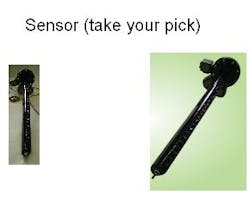Figure 3: The effect of different mixing speeds revealed by tomography.
|
As a substitute for traditionPressure filtration is an acute example of a process needing quality on-line monitoring. At the moment, there is little or no on-line help in determining end point or assessing filter cake homogeneity. Traditional methods are basically empirical. Filtration routinely continues far too long, wasting time. And there is no satisfactory way to spot formation of rat holes in the filter cake. With UK government backing, ITS suggested ERT for trials as a PAT tool to leading bio-processor Syngenta and filter manufacturer Rosenmund. In this case, 24 electrodes were used and arranged, with careful regard to filter integrity, in two distorted rings of eight and 16 across the filter cloth hold-down bars of a 36m3 vessel. Experts in electrochemistry from Glasgow Caledonian University kept a critical eye on product integrity.ERT data (Figure 4, below) allows comparison of filtration batches. The step increases and decreases in resistance during the early stages of each batch show the various wash cycles. The steady increase in resistance in the later stages corresponds to the drying cycle. Each data point on these graphs is a mean of over 100 individual voltage measurements taken from different regions within the filter, making the data sets amenable to statistical analysis.The potential benefits of using ERT to monitor pressure filtration? Better control and planning, meaning that management knows when filters should be available for use and can take early action when a bad batch is being processed. In addition, process efficiency can be improved through more effective manufacturing and capital savings are possible through more effective asset utilisation.
Benefits summaryERT is adept at picking up regional variations and changes, which are very important to know about when you are dealing with complex reactions or scale-up. It can also add value to existing measurement technologies. As a resource, it provides statistics both over space, showing variation within a specific region, and over time, plotting the trend towards an end point.To summarise other features of the more general use of the technology:
- The visual material supplied by ERT allows you to understand better what is going on in your process.
- The visual information can be reduced to key statistics (for instance, variance).
- Adjusting conditions on the basis of visual information means shorter lead times, and that helps you make better use of your assets.
- Better control of the process leads to bigger yields of the product you desire.
On ease of use:
- The equipment is scalable from laboratory use to production.
- Mounting the electrodes on a probe makes ERT easy to retrofit, simply replacing a baffle.
- Experience suggests the equipment is robust and intrinsically safe.
- ERT lends itself to a range of solutions from polar organics to strong acids and bases.
- It works for pipes as well as vessels.
ERT as a process toolIndustrial Tomography Systems has been working alongside major pharmaceutical companies on the development of the technology for use on process plant. This has included developing the instrumentation to comply with the requirements of intrinsic safety certification for operation in flammable atmospheres, sensor developments (electrode architecture and materials of construction) to allow retrofitting to existing process vessels and operation within chemically aggressive environments.ERT in various guises is providing information on the actual performance of manufacturing processes and insights into process dynamics that influence product quality and manufacturing performance. It can provide a fundamental understanding of the manufacturing processes. And there is every sign that ERT will become a standard PAT tool.For more information, contact Industrial Tomography Systems (
www.itoms.com).






